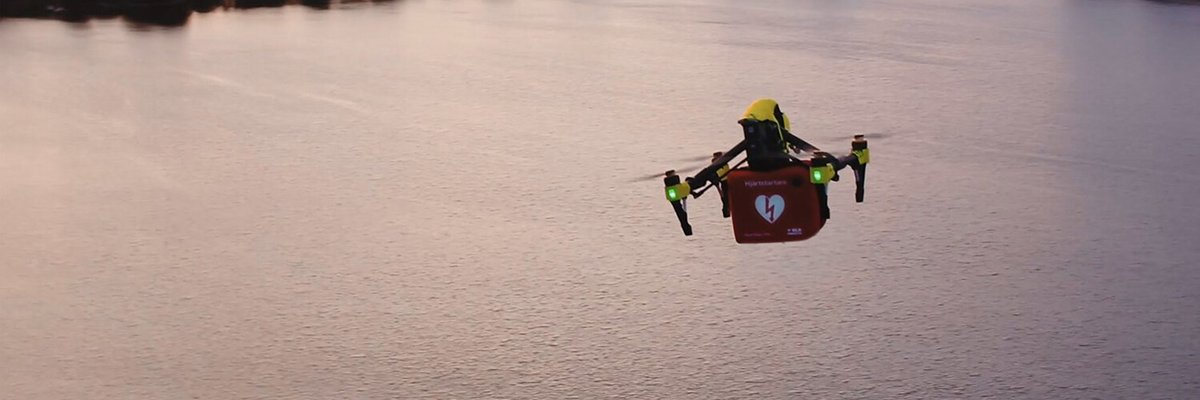
Recent approval of beyond-visual-line-of-sight (BVLOS) drone operation in the Netherlands is a huge step forward for drone inspection activities across Europe.
The Percepto drone-in-a-box, which carries out checks of storage tanks, is designed to work autonomously, with operators ready to take over, if necessary, from a control room at a remote location. The system is pre-programmed for different inspection flights, and images and other data can be compared between one flight and another to see the change in the data and the imagery of the different tanks the drone is inspecting.
In the Netherlands, Percepto partners with Falcker, a Dutch company that specialises in tank inspections at Rotterdam, Amsterdam and other large ports. Falcker uses the Percepto system to autonomously inspect tanks to detect damage or maintenance issues that could spell trouble for the companies operating the tanks.
Being an autonomous system, Percepto needs approval to fly beyond the operator’s visual line of sight – something that is not allowed in the basic regulation and requires specific approvals. The good news is that this approval will make it easier to operate in similar situations elsewhere in Europe.
Over the past two years, Europe has shifted to a new regulatory framework led by the European Aviation Safety Agency (EASA). The goal is to harmonise the regulation throughout all EASA member states. The new rules will allow operators to work more freely across borders and in different countries on the continent.
The new regulatory framework makes it possible for operators to apply for complex BVLOS missions, possibly flying drones over people with different levels of risk. The framework includes all aspects of risk mitigation that need to be used in a mission to ensure safety. The regulator can then confidently approve a given operation, knowing that it belongs to a given class.
Percepto and Falcker recently went through the new approval process with ILT, the Dutch Civil Aviation Authority. “We submitted what we planned to do – the concept of the operations, what we wanted to do with the system and where we wanted to do it,” said Avi Lozowick, director of global policy and government Affairs at Percepto.
“Then we did a full risk analysis of that operation and included all the mitigations and the safety features, both operational and technical, that are built into the Percepto systems to improve the safety of BVLOS operations.
“It is approved for the Netherlands, and the new regulation allows us to use that same approval anywhere in any EASA member state. We just need to present the site that it will be operating at and show how the conditions are similar to the conditions that were approved by ILT.”
Conducting inspections with drones has become a best practice in many industries over the past five to seven years. Drones are a new state-of-the-art for spotting problems in large tank farms for utility companies and chemical plants. They can also be used to inspect mines and other hard-to-reach installations.
It is now possible to have drones-in-a-box permanently on site, in the same way that closed-circuit television (CCTV) systems have become permanent fixtures. Because the drones can be controlled remotely, inspections can be performed daily without even having to send anyone on site.
“An operator can view everything, and you can take control from wherever you are, provided you have the right permissions to do so,” said Illy Gruber, vice-president of marketing at Percepto.
With drones permanently installed on site, and with the ability to control them remotely, it is now possible to have daily inspections rather than monthly or even annual inspections. Using tools such as artificial intelligence to analyse the data collected, it is much easier to detect anomalies and trends.
Missions can be pre-programmed with a certain flight path to inspect a tank, taking pictures from the same angle once a week for a full year to see if there is any change over time. The pictures allow ground crews to distinguish between areas that need attention from maintenance teams and areas with minor corrosion that can be monitored continuously until they do need maintenance.
“This new regulatory framework is a big step forward for drone operations,” said Lozowick. “Solutions where autonomous drones fly beyond visual line of sight will be replicated with many customers throughout Europe – and the world in general. Combine that with the ability to have one person operating multiple drones from a control room at a different location and it is easy to see that there will be tremendous progress in the near to medium term.”
The ability to have robots work on site and controlled remotely fits well with the growing trend for environmental, social and corporate governance (ESG). Drones can go to places where people cannot go, and can do so often.
Drone inspections will also meet the growing need to inspect critical infrastructure more thoroughly and more often. Much infrastructure is ageing and needs to be inspected more frequently to avoid potential catastrophes. But having humans inspect a refinery or a power grid is difficult, time-consuming and expensive. Naturally, companies have tended to perform inspections only once or twice a year.
Gruber added: “With a solution permanently on site, you can now perform inspection on a daily basis in many cases. You don’t have to inspect the entire grid every day, but you can look at portions of it every day and complete a full inspection every month. This is just an example that illustrates how much impact remote-controlled drone inspections will have.”

Comentarios recientes